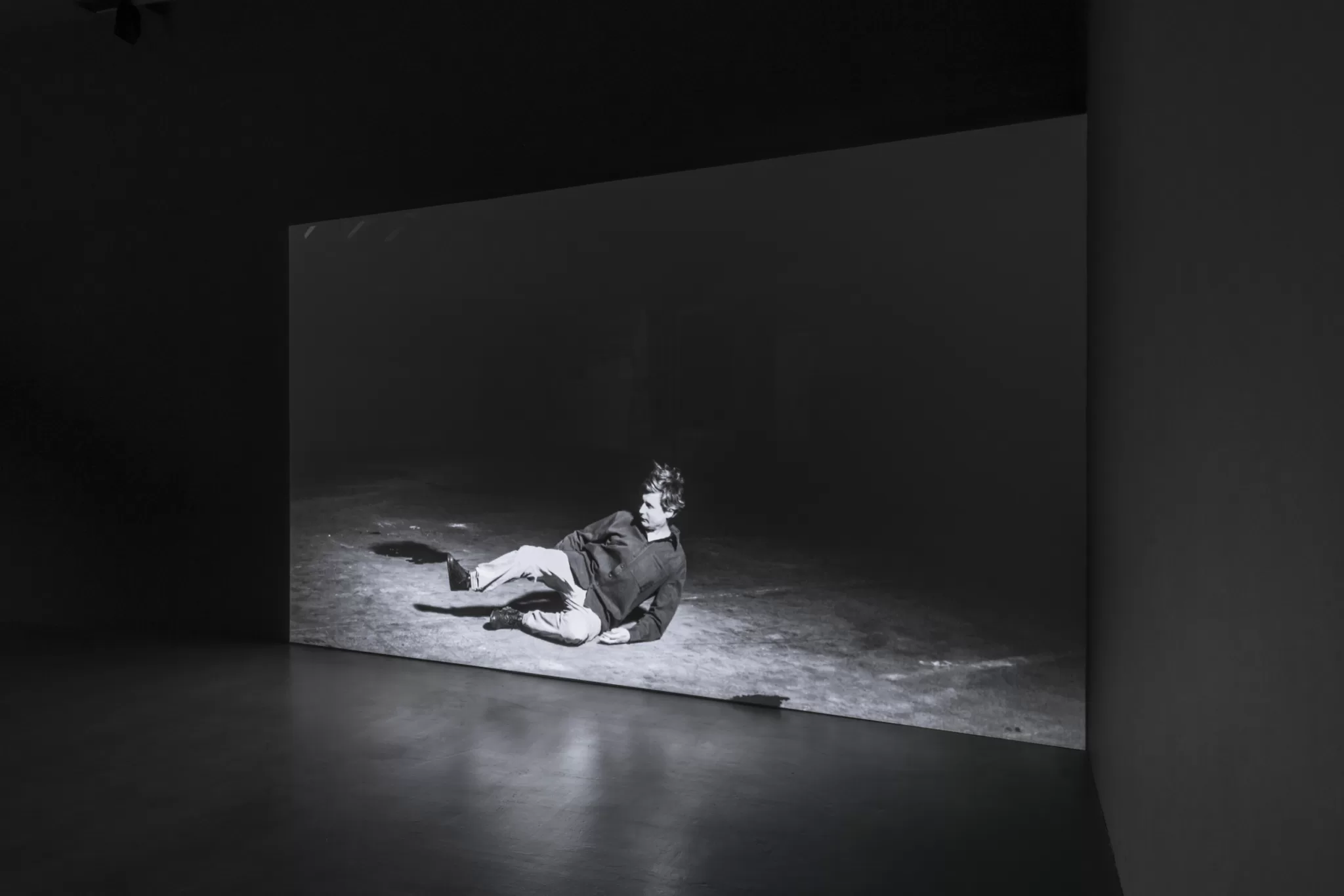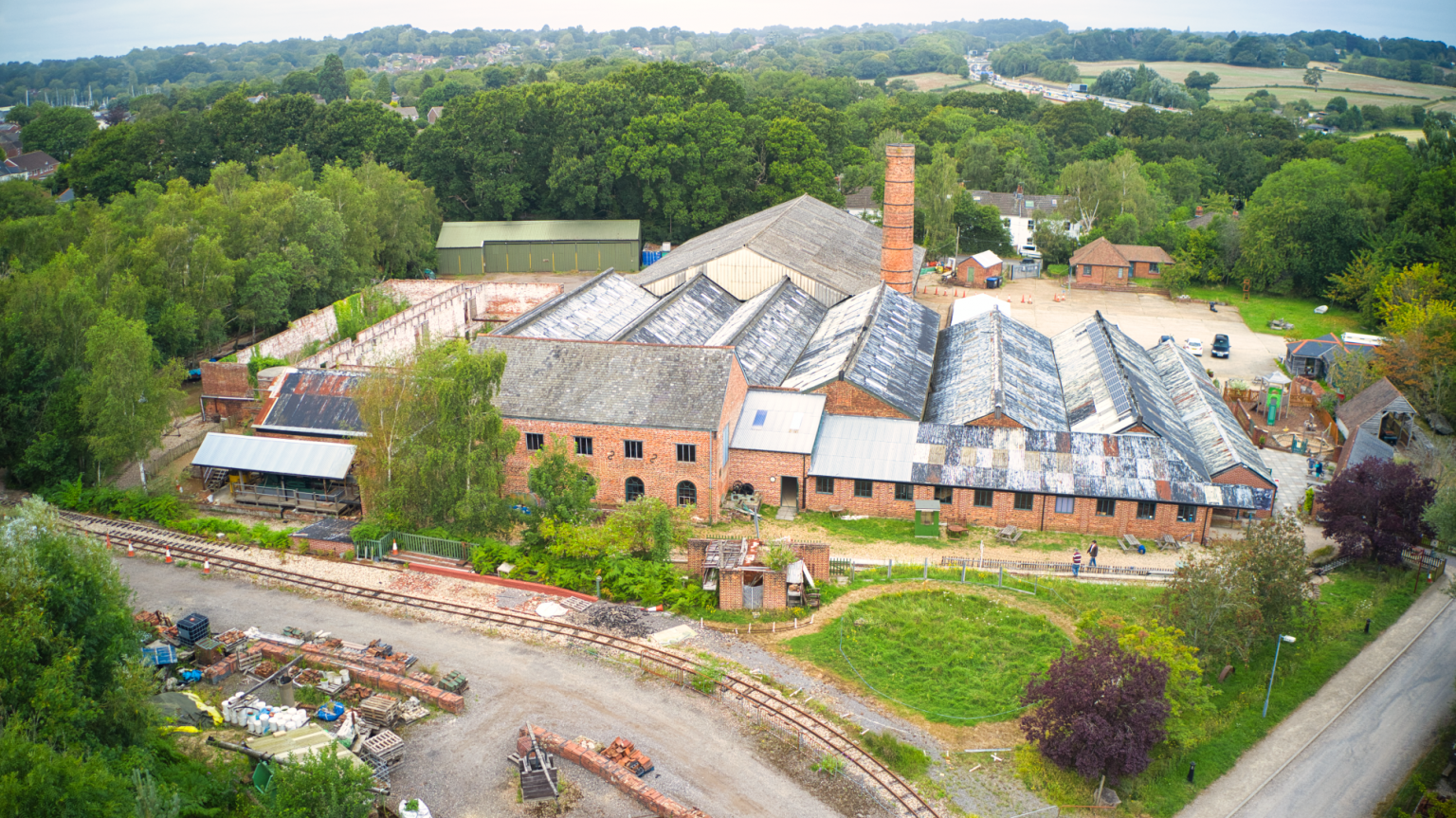Press release – IWM 14-18 now project artist selection
The Brickworks Museum in Bursledon has commissioned a film-based artist Grzegorz Stefański to create a new installation at The Brickworks Museum opening in the summer of 2024.
The artwork will be based on the tales told to us by our local community, remembering the rebuilding of Southampton after the Second World War. The installation will be part of Imperial War Museums’ IWM 14-18 NOW Legacy Fund, a national partnership programme of over 20 artist commissions inspired by the heritage of conflict.
‘Spill’ (2018) an artwork by Grzegorz Stefanski
‘What we are really interested in is how the City emerged from the rubble,’ says Mary Flinn, Collections Manager for the Museum. ‘There is a lot of research on the Blitz itself but little on the rebuilding of Southampton. We know that our brickworks produced bricks for the rebuilding and it has been fascinating to hear about how they were used to shape the City in the 1950s and 1960s. We cannot wait to see how Grzegorz brings those stories to life.’
The work will reflect on the aftermath of a period of conflict and how communities heal. The Museum has involved its own volunteers and members of the Southampton Living Well (Freemantle) Hub in the initial collecting of memories. They have also spent time recording testimonials with businesses that have a long history of working in Southampton, especially during the post-war period.
The Brickworks Museum in Bursledon has commissioned a film-based artist Grzegorz Stefański to create a new installation at The Brickworks Museum opening in the summer of 2024.
The artwork will be based on the tales told to us by our local community, remembering the rebuilding of Southampton after the Second World War. The installation will be part of Imperial War Museums’ IWM 14-18 NOW Legacy Fund, a national partnership programme of over 20 artist commissions inspired by the heritage of conflict.

‘Spill’ (2018) an artwork by Grzegorz Stefanski
‘What we are really interested in is how the City emerged from the rubble,’ says Mary Flinn, Collections Manager for the Museum. ‘There is a lot of research on the Blitz itself but little on the rebuilding of Southampton. We know that our brickworks produced bricks for the rebuilding and it has been fascinating to hear about how they were used to shape the City in the 1950s and 1960s. We cannot wait to see how Grzegorz brings those stories to life.’
The work will reflect on the aftermath of a period of conflict and how communities heal. The Museum has involved its own volunteers and members of the Southampton Living Well (Freemantle) Hub in the initial collecting of memories. They have also spent time recording testimonials with businesses that have a long history of working in Southampton, especially during the post-war period.

Artist Grzegorz Stefanski
Artist Grzegorz won the commission saying, ‘We are living in times that do not offer much time to heal when historical traumas are constantly being triggered by contemporary conflicts. The Brickworks Museum commission is an opportunity for me to look into film-making as an activity that shapes and changes history, a process of remembering, forgetting and moving on.’
The selection of the artist was undertaken with the help of IWM and the Artist Training Programme of Art School Plus. Operating as both an alternative art school and a convener of unique art projects, Art School Plus is the bridge which connects artists with real-world public realm commissions to realise and imagine new ways in which art can exist in the world. His enrolment in the School was made possible thanks to the financial support of the Polish Cultural Institute. There were eight potential candidates and the standard was very high. Grzegorz impressed the panel with his new ways of looking at the ideas raised.
The Brickworks Museum
Notes for Editors – The Brickworks Museum:
The Museum is the only remaining Victorian steam-powered brick factory left in the country. It is a very rare survivor and has all of its original building and machinery complex in place. It is considered of national significance by English Heritage and has been given Grade II* listing.
The factory was built by the Ashby family. It started work in 1897 and at the peak of its productivity the factory produced 20 million bricks a year. The Brickworks was a prominent local employer rivalled only by the local strawberry industry in scale.
The factory closed in the 1970s, shortly after the building of the M27 motorway and in almost direct response to the introduction of the Health & Safety at Work Act (1974). The owners of the brickworks, already struggling with the competition from more efficient rivals, could not make the site safe by 20th century standards and the site closed its doors.
The buildings were rescued from demolition and handed over to Hampshire Buildings Preservation Trust. A large restoration project made the buildings water-tight and restored the working machinery. In 2012 the site was granted a Heritage Lottery Fund award to turn the site into a museum, which opened to the public in 2014.
The whole of the brickmaking process is included in a tour around the factory complex. There is also a collection of over 4,000 bricks from manufacturers across Britain and other ceramic building materials including chimney pots, roof tiles and land drains. This important survivor of the Victorian age of innovation strives now to tell the story not only of the Bursledon Brick Company in whose factory it is based, but also the wider story of brickmaking in Britain from the Roman period to the present day.
With an extensive event program, dedicated education program and a range of interactive, accessible and hands-on exhibits, the museum has a wide appeal but suffers burgeoning maintenance costs. The vast majority of the work on site is undertaken by volunteers and the museum operates with a ‘men’s shed’ mentality, providing routine, opportunity and companionship to a demographic that statistically is shown to suffer from isolation and loneliness.
The IWM 14-18 NOW Legacy Fund is a national partnership programme of over 20 artist commissions inspired by the heritage of conflict. Led by Imperial War Museums, the IWM 14-18 NOW Legacy Fund was created following the success of 14-18 NOW, the official UK arts programme for the First World War centenary.
To mark the end of the First World War centenary, Imperial War Museums and 14-18 NOW worked together to co-commission the critically acclaimed film They Shall Not Grow Old by Academy Award winner Peter Jackson, which was seen by nearly 5 million people globally. Following the unprecedented success of the film, 14-18 NOW and IWM agreed that a share of the film’s royalties would be used to support a new programme of artist commissions, the IWM 14-18 NOW Legacy Fund. A total of £2.5 million is being made available to artists and cultural organisations across the UK.
Through the IWM 14-18 NOW Legacy Fund, IWM is now working in partnership with cultural organisations from across the UK to commission over 20 ambitious new artworks inspired by the heritage of conflict and created by world-leading and emerging contemporary artists. These new commissions will forge new opportunities for artistic engagement, bring art to audiences in new and relevant ways by connecting people, places and experiences, and kick-start cultural dialogue as we recover from the wide-reaching impacts of COVID-19. The commissions will go on public display across the UK from 2022.
https://www.iwm.org.uk/partnerships/subject-specialist-network/14-18-now-legacy-fund